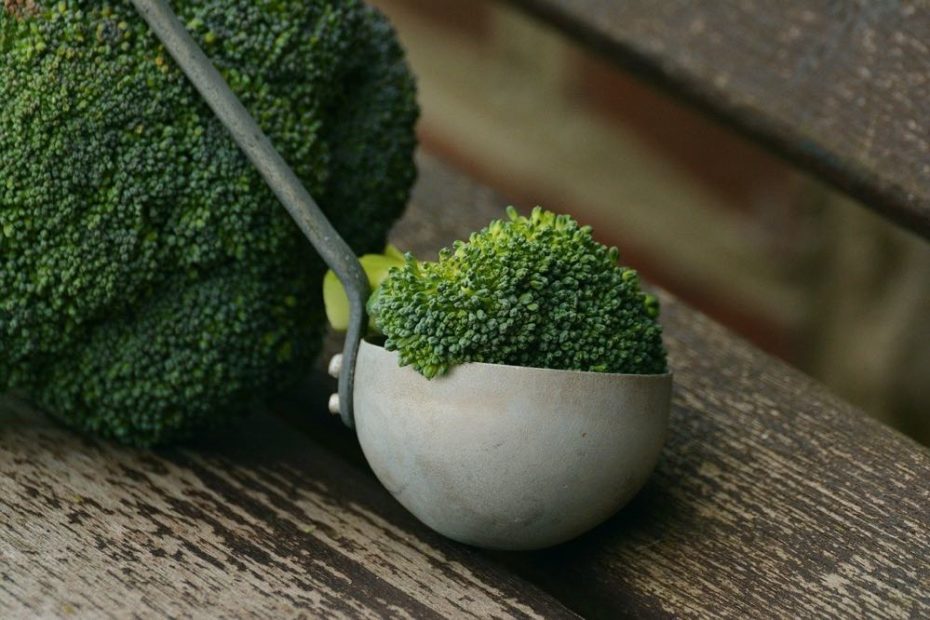The World Health Organisation recommends consuming 400g of fruits and vegetables each day. Fruits and vegetables have a wide range of benefits – they are an excellent source of vitamins and minerals, are high in dietary fibre and contribute to a healthy and balanced diet. Consuming the recommended quantity of fruit and vegetables can help to lower the risk of serious health problems including heart disease, stroke and some types of cancer (1). However, is it more nutritious to eat our vegetables raw or cooked?
Benefits of raw and cooked vegetables
Eating both raw and cooked vegetables bring different advantages. In this section we explore some of the benefits to eating our vegetables raw versus eating our vegetables cooked.
Raw vegetables
Water-soluble vitamins such as vitamin C and the B vitamins can be lost during the cooking process. Boiling vegetables may result in up to a 50-60% reduction in the content of water-soluble vitamins. The longer the food is exposed to heat, the greater the loss of nutrients. Eating vegetables raw allows for the water-soluble vitamins to be retained.
Cooked vegetables
Cooking breaks down some of the fibres and plant cell walls in food, making it easier for the body to digest and absorb the nutrients.
Cooking increases the availability of antioxidants such as beta-carotene and lycopene. Beta carotene is converted into vitamin A by the body and reduces the risk of developing heart disease. The antioxidant lycopene is more easily absorbed by the body once food has been cooked, decreasing the risk of heart disease and certain cancers.
Another benefit of cooking vegetables is that the cooking process kills some of the toxins, bacteria and other harmful compounds in foods. Spinach, lettuce and tomatoes are most frequently contaminated by bacteria (2).
Top 3 vegetables to eat raw
Whether we should be consuming our vegetables raw or cooked depends on the food. Let’s first explore the vegetables which are more nutritious to consume raw.
Broccoli
Broccoli contains a cancer fighting plant compound called sulforaphane. Higher amounts of sulforaphane are available from raw broccoli (bioavailability of 37%) compared to cooked broccoli (3.4%). Absorption of sulforaphane is also delayed when broccoli is cooked by approximately 4.5 hours (3).
Onions
Raw onion inhibits platelet aggregation, helping to prevent heart disease. Cooking onions destroys this anti-platelet activity. Anti-platelet activity is destroyed between 3 and 6 minutes of steaming and after 10 minutes the onions stimulated platelet activity (4).
Garlic
Raw garlic contains sulphur compounds which help to prevent cancer. Microwaving garlic for as little as 60 seconds or oven cooking garlic for 45 minutes destroys these sulphur compounds, reducing the anti-cancer properties of garlic (5).
Other vegetables which are better to consume raw include cabbage, cauliflower and kale.
Top 3 vegetables to eat cooked
Now we have explored those foods which should be consumed raw, let’s look at some examples of vegetables which should be eaten cooked.
Tomatoes
The main carotenoid in tomatoes, lycopene, helps to reduce the risk of heart disease and some cancers. Cooking enhances the nutritional value of tomatoes by increasing the amount of bioaccessible lycopene and total antioxidant activity (6).
Spinach
Spinach contains oxalic acid which can bind to minerals such as calcium and iron reducing mineral absorption. Oxalic acid may also contribute to kidney stones formation. Boiling spinach results in a 87% loss of soluble oxalic acid and steaming results in a 42% loss (7).
Mushrooms
Cooking mushrooms reduces the agaritine content, a potential carcinogen found in mushrooms. Agaritine content of cultivated mushrooms is reduced to various degrees by boiling, dry baking, frying and microwaving (8).
Other vegetables which are better to consume cooked include asparagus, carrots and legumes
A healthy balance
Overall it is a good idea to include a mixture of raw and cooked vegetables in your diet to promote a healthy lifestyle. RYH provides 4 weeks’ worth of delicious recipes personalised to your preferences and aims to help individuals eat on average 12 different varieties of vegetables and fruit per day.
References
1. ‘Why 5 A Day?’, NHS [Online]. Last Accessed 09/09/20.
Available from https://www.nhs.uk/live-well/eat-well/why-5-a-day/
2. Becky Bell, ‘Is Raw Food Healthier Than Cooked Food?’, The Healthline [Online]. Last Accessed 09/09/20. Available from https://www.healthline.com/nutrition/raw-food-vs-cooked-food
3. Martijn Vermeulen, Ineke W.A.A Klopping-Ketelaars, Robin van den Berg and Wouter H.J. Vaes. ‘Bioavailability and Kinetics of Sulforaphane in Humans after Consumption of Cooked versus Raw Broccoli’. Journal of Agricultural and Food Chemistry. 2008
Available from https://pubmed.ncbi.nlm.nih.gov/18950181/
4. Emilie A Hansen, John D Folts and Irwin L Goldman. ‘Steam-cooking rapidly destroys and reverses onion-induced antiplatelet activity’. Nutrition Journal. 2012
Available from https://pubmed.ncbi.nlm.nih.gov/22992282/
5. Kun Song and John A Milner. ‘The Influence of Heating on the Anticancer Properties of Garlic’. The Journal of Nutrition. 2001.
Available from https://pubmed.ncbi.nlm.nih.gov/11238815/
6. Veronica Dewanto, Xianzhong Wu, Kafui K.Adom and Rui Hai Liu. ‘Thermal processing enhances the Nutritional Value of Tomatoes by Increasing Total Antioxidant Activity. Journal of Agricultural and Food Chemistry. 2002.
Available from https://pubmed.ncbi.nlm.nih.gov/11982434/
7. Weiwen Chai and Michael Liebman. ‘Effect of Different Cooking Methods on Vegetable Oxalate Content’. Journal of Agricultural and Food Chemistry. 2005.
Available from https://pubmed.ncbi.nlm.nih.gov/15826055/
8. V. Schulzova, J. Hajslova, R. Peroutka, J.Gry and H.C. Andersson. ‘Influence of storage and household processing on the agaritine content of the cultivated Agaricus mushroom.’ Food Additives & Contaminants Journal. 2002.
Available from https://pubmed.ncbi.nlm.nih.gov/12396396/
